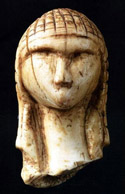Anthropology, Department of

Department of Anthropology: Faculty Publications
Document Type
Article
Date of this Version
1-2014
Citation
Published in Journal of Archaeological Science 41 (January 2014), pp. 365–375; doi:10.1016/j.jas.2013.08.006
Abstract
This paper contributes to the archaeological study of movement in urban environments where built forms and natural features worked together to play a key role in structuring human mobility.We propose an analytical method using least cost analysis in a Geographic Information System (GIS) to empirically measure social integration. The method defines mobility as the potential for pedestrian movement, and identifies locations where people were most likely to walk to or through in a landscape. The calculated mobility data are then employed to identify with whom people were most likely to interact and the degree to which they were socially connected with particular groups of society (social networks), and integrated within society as a whole. The results reveal underlying spatial complexities that in conjunction with other archaeological data can be correlated to social, political, or economic inequality in ancient cities.We apply the method to measure social integration between four socioeconomic groups at the Late Classic (AD 600-900) Maya city of Copán, Honduras.
Included in
Archaeological Anthropology Commons, Digital Humanities Commons, Geographic Information Sciences Commons, Latin American Languages and Societies Commons, Urban Studies and Planning Commons


Comments
Copyright © 2013 Elsevier Ltd. Used by permission.